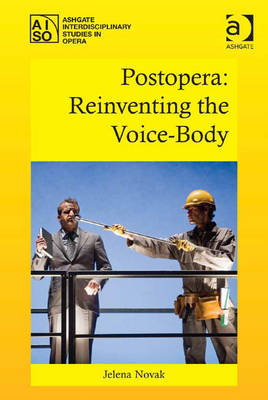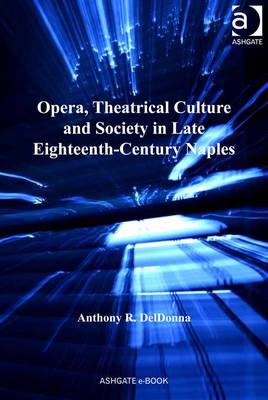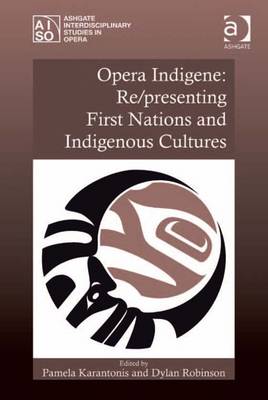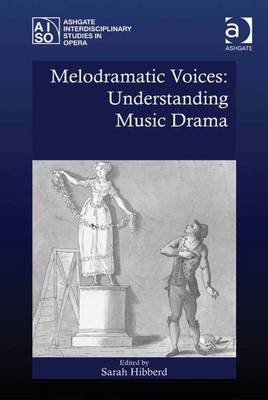Ashgate Interdisciplinary Studies in Opera
5 total works
Why, in the dying days of the Napoleonic Empire, did half of Paris turn out for the funeral of a composer? The death of Andre-Ernest-Modeste Gretry in 1813 was one of the sensations of the age, setting off months of tear-stained commemorations, reminiscences and revivals of his work. To understand this singular event, this interdisciplinary study looks back to Gretry's earliest encounters with the French public during the 1760s and 1770s, seeking the roots of his reputation in the reactions of his listeners. The result is not simply an exploration of the relationship between a musician and his audiences, but of developments in musical thought and discursive culture, and of the formation of public opinion over a period of intense social and political change.
The core of Gretry's appeal was his mastery of song. Distinctive, direct and memorable, his melodies were exported out of the opera house into every corner of French life, serving as folkloristic tokens of celebration and solidarity, longing and regret. Gretry's attention to the subjectivity of his audiences had a profound effect on operatic culture, forging a new sense of democratic collaboration between composer and listener. This study provides a reassessment of Gretry's work and musical thought, positioning him as a major figure who linked the culture of feeling and the culture of reason - and who paved the way for Romantic notions of spectatorial absorption and the power of music.
Both in opera studies and in most operatic works, the singing body is often taken for granted. In Postopera: Reinventing the Voice-Body, Jelena Novak reintroduces an awareness of the physicality of the singing body to opera studies. Arguing that the voice-body relationship itself is a producer of meaning, she furthermore posits this relationship as one of the major driving forces in recent opera. She takes as her focus six contemporary operas - La Belle et la Bete (Philip Glass), Writing to Vermeer (Louis Andriessen, Peter Greenaway), Three Tales (Steve Reich, Beryl Korot), One (Michel van der Aa), Homeland (Laurie Anderson), and La Commedia (Louis Andriessen, Hal Hartley) - which she terms 'postoperas'. These pieces are sites for creative exploration, where the boundaries of the opera world are stretched. Central to this is the impact of new media, a de-synchronization between image and sound, or a redefinition of body-voice-gender relationships. Novak dissects the singing body as a set of rules, protocols, effects, and strategies. That dissection shows how the singing body acts within the world of opera, what interventions it makes, and how it constitutes opera's meanings.
Opera, Theatrical Culture and Society in Late Eighteenth-Century Naples
by Dr. Anthony R. DelDonna
The operatic culture of late eighteenth-century Naples represents the fullest expression of a matrix of creators, practitioners, theorists, patrons, and entrepreneurs linking aristocratic, public and religious spheres of contemporary society. The considerable resonance of 'Neapolitan' opera in Europe was verified early in the eighteenth century not only through voluminous reports offered by locals and visitors in gazettes, newspapers, correspondence or diaries, but also, and more importantly, through the rich and tangible artistic patrimony produced for local audiences and then exported to the Italian peninsula and abroad. Naples was not simply a city of entertainment, but rather a cultural epicenter and paradigm producing highly innovative and successful genres of stage drama reflecting every facet of contemporary society.
Anthony R. DelDonna provides a rich study of operatic culture from 1775-1800. The book demonstrates how contemporary stage traditions, stimulated by the Enlightenment, engaged with and responded to the changing social, political, and artistic contexts of the late eighteenth century in Naples. It focuses on select yet representative compositions from different genres of opera that illuminate the diverse contemporary cultural forces shaping these works and underlining the continued innovation and European recognition of operatic culture in Naples. It also defines how the cultural milieu of Naples - aristocratic and sacred, private and public - exercises a profound yet idiosyncratic influence on the repertory studied, the creation of which could not have occurred elsewhere on the Continent.
Opera Indigene: Re/presenting First Nations and Indigenous Cultures
The representation of non-Western cultures in opera has long been a focus of critical inquiry. Within this field, the diverse relationships between opera and First Nations and Indigenous cultures, however, have received far less attention. Opera Indigene takes this subject as its focus, addressing the changing historical depictions of Indigenous cultures in opera and the more contemporary practices of Indigenous and First Nations artists. The use of 're/presenting' in the title signals an important distinction between how representations of Indigenous identity have been constructed in operatic history and how Indigenous artists have more recently utilized opera as an interface to present and develop their cultural practices.
This volume explores how operas on Indigenous subjects reflect the evolving relationships between Indigenous peoples, the colonizing forces of imperial power, and forms of internal colonization in developing nation-states. Drawing upon postcolonial theory, ethnomusicology, cultural geography and critical discourses on nationalism and multiculturalism, the collection brings together experts on opera and music in Canada, the Americas and Australia in a stimulating comparative study of operatic re/presentation.
Melodramatic Voices: Understanding Music Drama
The genre of melodrame a grand spectacle that emerged in the boulevard theatres of Paris in the 1790s - and which was quickly exported abroad - expressed the moral struggle between good and evil through a drama of heightened emotions. Physical gesture, mise en scene and music were as important in communicating meaning and passion as spoken dialogue.
The premise of this volume is the idea that the melodramatic aesthetic is central to our understanding of nineteenth-century music drama, broadly defined as spoken plays with music, operas and other hybrid genres that combine music with text and/or image. This relationship is examined closely, and its evolution in the twentieth century in selected operas, musicals and films is understood as an extension of this nineteenth-century aesthetic. The book therefore develops our understanding of opera in the context of melodrama's broader influence on musical culture during the nineteenth and twentieth centuries.
This book will appeal to those interested in film studies, drama, theatre and modern languages as well as music and opera.




